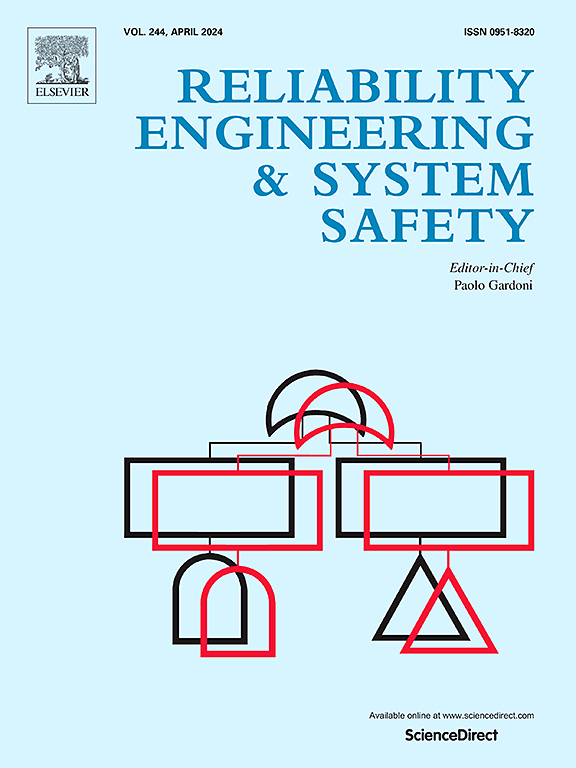二维平衡系统多阶段工作强度选择与维护策略的联合优化
IF 11
1区 工程技术
Q1 ENGINEERING, INDUSTRIAL
引用次数: 0
摘要
现有的基于构件状态的平衡系统研究大多只考虑一维线性结构,而许多工程系统是二维的。在此基础上,提出了一种二维平衡系统可靠性模型。所有组件排列在一个二维矩阵中,并划分为大小相等的网格。该系统需要完成包含几个阶段的任务。系统有多个可选的工作强度,可以在较高的工作强度下完成更多的任务,但故障率也随之增加。当每个网格中各分量状态的最大差值小于预定阈值时,系统达到平衡。当系统不平衡,或者电网中失效组件的总数超过限制时,系统就会失效。为了完成更多的任务,减少系统故障造成的损失,提出了工作强度选择与维护的联合策略。采用马尔可夫决策过程来描述系统的运行过程。采用数值迭代算法计算最优结果。最后,以一个二维制造系统为例,验证了所提联合策略的有效性。本文章由计算机程序翻译,如有差异,请以英文原文为准。
Joint optimization of multi-stage work intensity selecting and maintenance policy for a two-dimensional balanced system
Most existing research on balanced systems based on component state only considers the one-dimensional linear structure, but many engineering systems are two-dimensional. Driven by this reality, a two-dimensional balanced system reliability model is proposed. All components are arranged in a two-dimensional matrix, and divided into grids of equal size. The system is required to complete a task containing several phases. The system has several optional work intensities such that it can complete more tasks under a higher work intensity, but the failure rate also increases. When the maximum difference of component states in each grid is less than a predetermined threshold, the system is balanced. When the system is unbalanced, or the total number of failed components in a grid exceeds a limit, it fails. To complete more tasks and reduce the loss caused by system failure, a joint policy of work intensity selecting and maintenance is proposed. A Markov decision process is used to describe the system operation process. The optimal results are calculated by the value iteration algorithm. Finally, a two-dimensional manufacturing system is taken as an example to verify the effectiveness of the proposed joint strategy.
求助全文
通过发布文献求助,成功后即可免费获取论文全文。
去求助
来源期刊

Reliability Engineering & System Safety
管理科学-工程:工业
CiteScore
15.20
自引率
39.50%
发文量
621
审稿时长
67 days
期刊介绍:
Elsevier publishes Reliability Engineering & System Safety in association with the European Safety and Reliability Association and the Safety Engineering and Risk Analysis Division. The international journal is devoted to developing and applying methods to enhance the safety and reliability of complex technological systems, like nuclear power plants, chemical plants, hazardous waste facilities, space systems, offshore and maritime systems, transportation systems, constructed infrastructure, and manufacturing plants. The journal normally publishes only articles that involve the analysis of substantive problems related to the reliability of complex systems or present techniques and/or theoretical results that have a discernable relationship to the solution of such problems. An important aim is to balance academic material and practical applications.
 求助内容:
求助内容: 应助结果提醒方式:
应助结果提醒方式:


